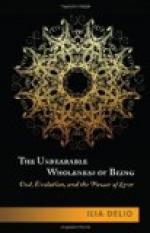Even in our time, when so much is said and written about modern woman and her claims, her feeling is still perfect in itself; compared to the discord and heterogeneity of man, she represents simplicity and harmony. Both purely spiritual worship and undifferentiated sexual desire are exceptions as far as she is concerned and must still be regarded as abnormal.
This unbroken, determinative female eroticism may possibly be explained (as Weininger explains it) by woman’s sexuality, which is absolute, and does not rise above the horizon of distinct consciousness, but Weininger’s dualism is in this direction attempting to value and standardise something which in its essence is alien to his standard.
Psycho-physical unity, then, is the basic characteristic of female eroticism, but the state of affairs in the case of male eroticism is a very different one. A study of the gradual origin of the erotic elements will facilitate a better understanding of the relevant phenomena.
In the case of woman, the primary sexual instinct pervades the whole being; it has been refined and purified without any great fluctuations or changes; in the case of man it has always been restricted to certain regions of his physical and psychical life, and an entirely novel experience was required before it could win to the final form of personal love. This prize, in his case, is therefore enhanced by the fact of being the outcome of a long conflict; the reward of a task still showing the traces of the struggle and pain of centuries. The truth of the words “Pleasure is degrading” had been established by experience.
A few historical instances, illustrating female eroticism, will uphold my contention. In the remote days of Greek antiquity, we find an example of undivided wifely love in Alcestis, whose devotion to her husband sent her to voluntary death in order to lengthen his life. Wifely devotion accomplished what parental love could not achieve. The Alcestis of Euripides represents a feeling very familiar to us. Penelope, the faithful martyr, is a similar instance.




